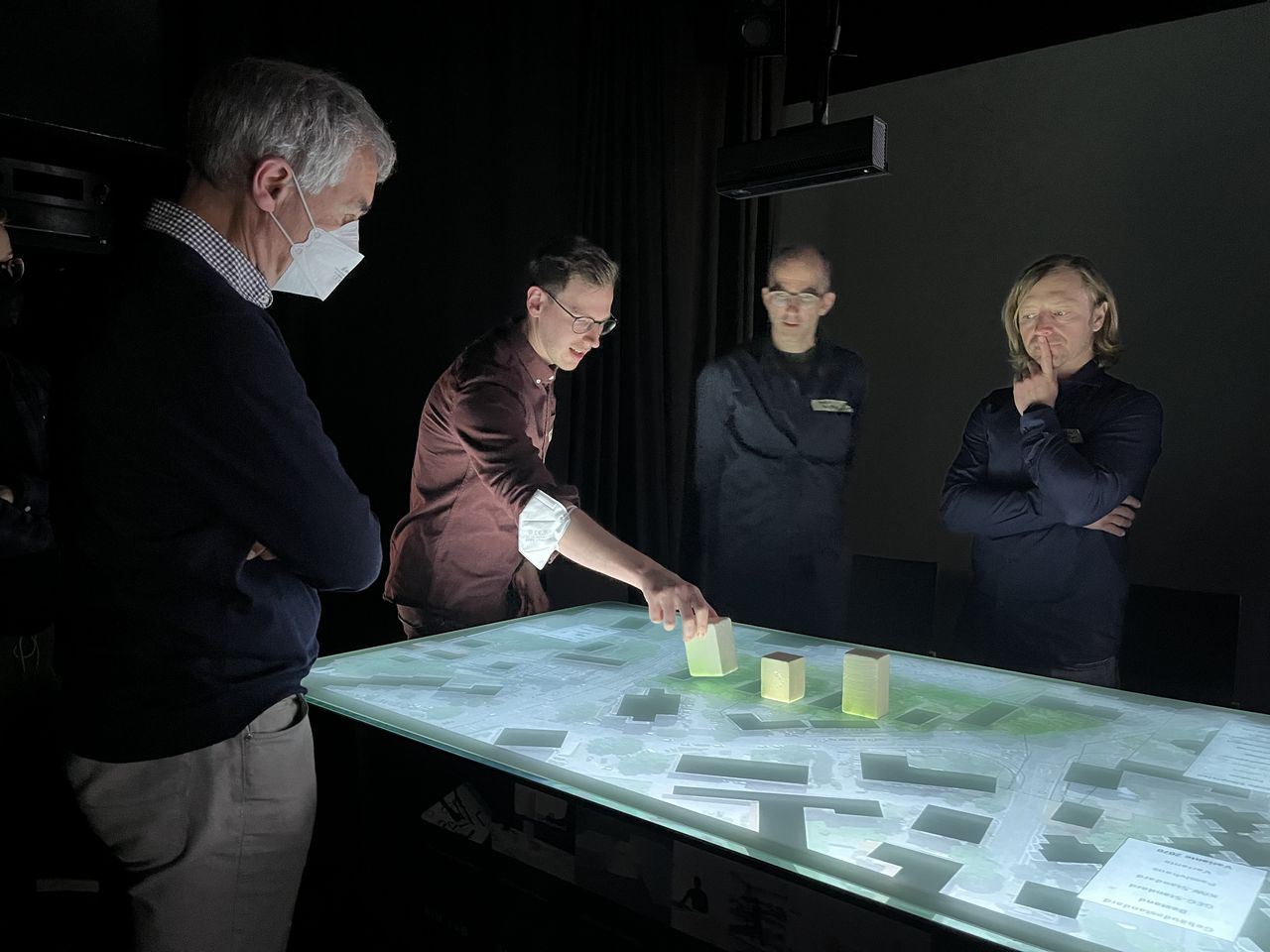Project Goals
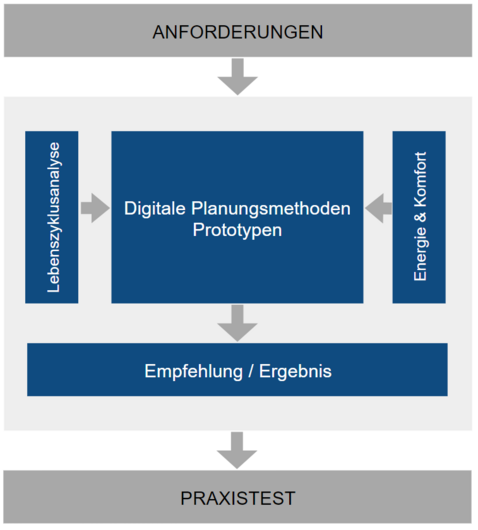
- Practical estimations of the impacts of densification projects on indoor and outdoor comfort, as well as resource requirements. Especially the effectiveness of green infrastructure and resource-efficient building materials over the entire lifecycle were considered.
- Design of digital methods for decision support in densification projects, based on the Collaborative Design Platform (CDP) developed at the Technical University of Munich.
The project focused on simulation and visualization in a decision-support tool for use in planning processes. Potential was initially shown, followed by the quantification of the impacts of different densification scenarios in a selected type of settlement on climate protection (energy demands, greenhouse gas emissions) and climate change adaptation (microclimate indoors and outdoors). Finally, simulation methods for implementation on the 3D tool were specified. In addition, transferability to practice was addressed and a workshop was conducted with municipal representatives. Finally, a manual on the use of digital methods for municipalities and planners was developed.
The potential for densification in various types of settlements was determined through a literature search. Planning tools as well as legal frameworks were recorded and analyzed. At the same time, a good practice database for successful densification strategies was developed in collaboration with municipalities.

The considered densification scenarios were quantified in terms of energy and comfort. By coupling a thermal building simulation with a microclimate simulation, summertime comfort was considered for both indoor and outdoor spaces. This allowed for the quantification of structural measures (e.g. insulation) and green measures (e.g. trees). To support the decision-making process interactively, a way to output results in real time was established.
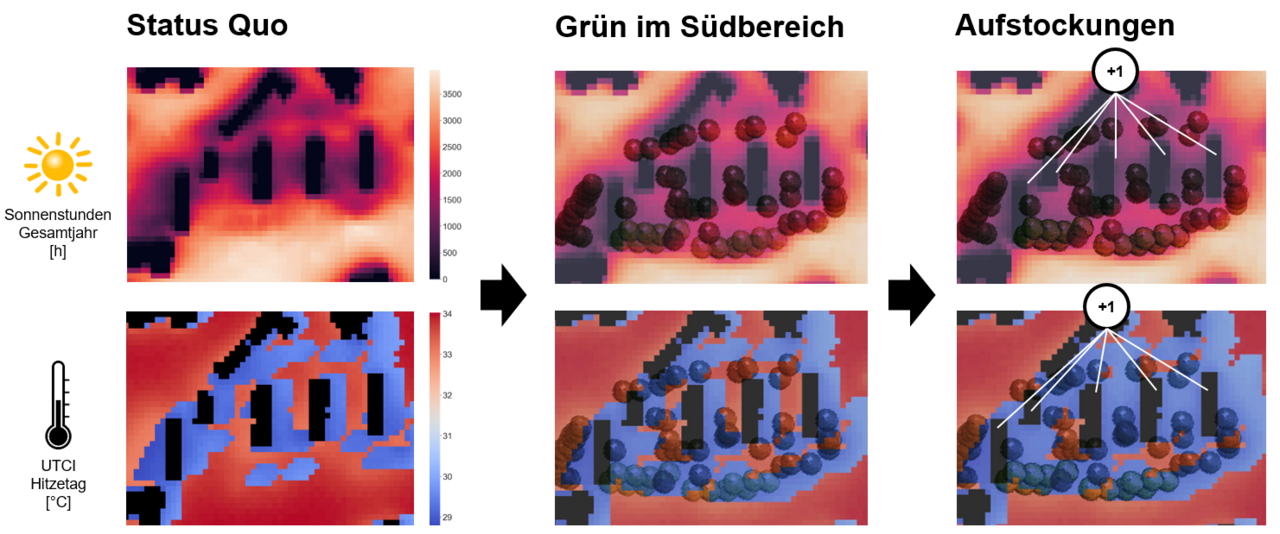
In addition to the climate-resilient implementation of densification projects in terms of their operation, impacts on the environment and resource consumption must also be included in the assessment. The ecological life cycle assessment (LCA) is an established method for this purpose. The focus of the conducted investigations was on the energy and material flows of the manufacturing and disposal phases. In addition, a way to evaluate urban greenery in the context of CO2 and primary energy savings was developed and implemented.
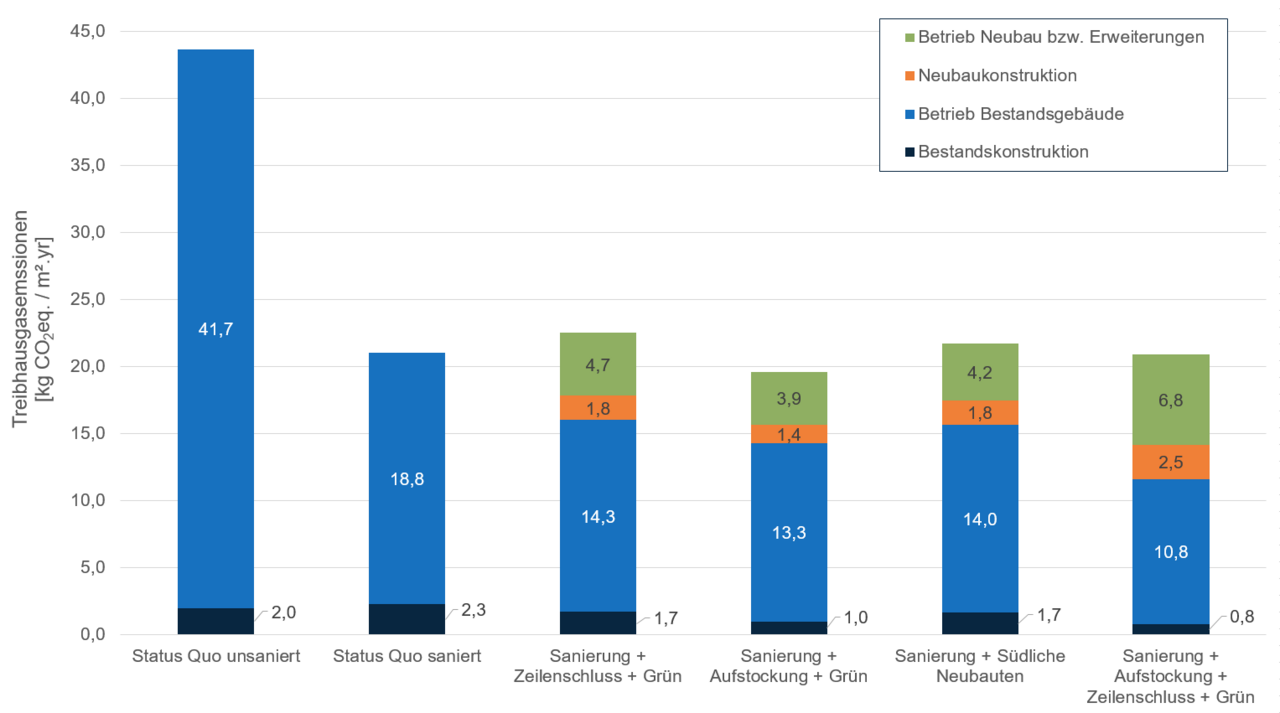
The motivation behind the interdisciplinary research project CDP is to resolve the current discrepancy between known analog working methods in the early phases of architectural design and the increasing use of digital tools in office practice. This resulted in a prototypical realization of an interactive working environment for use in the early design phases. By directly linking known analog working methods with digital computer-aided design tools, the CDP represents a design platform in the urban context that allows designers to work in traditional ways while also utilizing the potential of computers. The CDP was used as the base platform on which the project developments were tested and prototypically implemented.
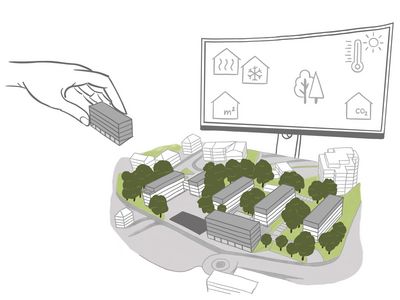
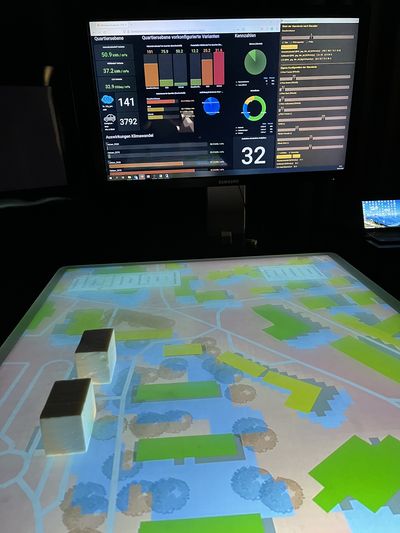
In an online survey, all Bavarian municipalities with a projected population growth of at least 2.5% were asked about their experiences with densification development. This made it possible to address the necessary transferability of the developed decision-support tool to practical applications in urban planning. Relevant groups of people who can use or benefit from the visualization tool in their professional lives in the future include city administrations, urban planners, research institutions, political decision-makers, housing cooperatives, and citizens.
